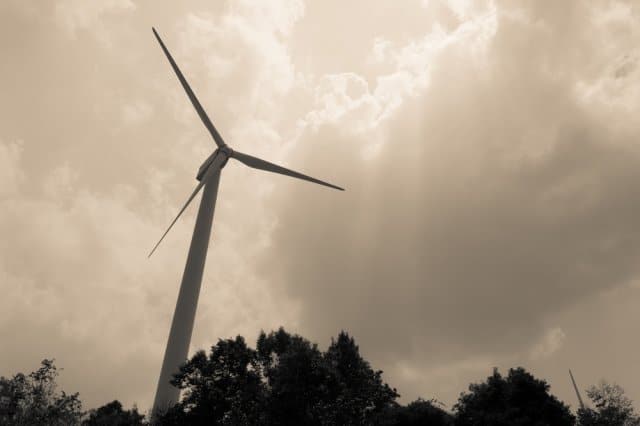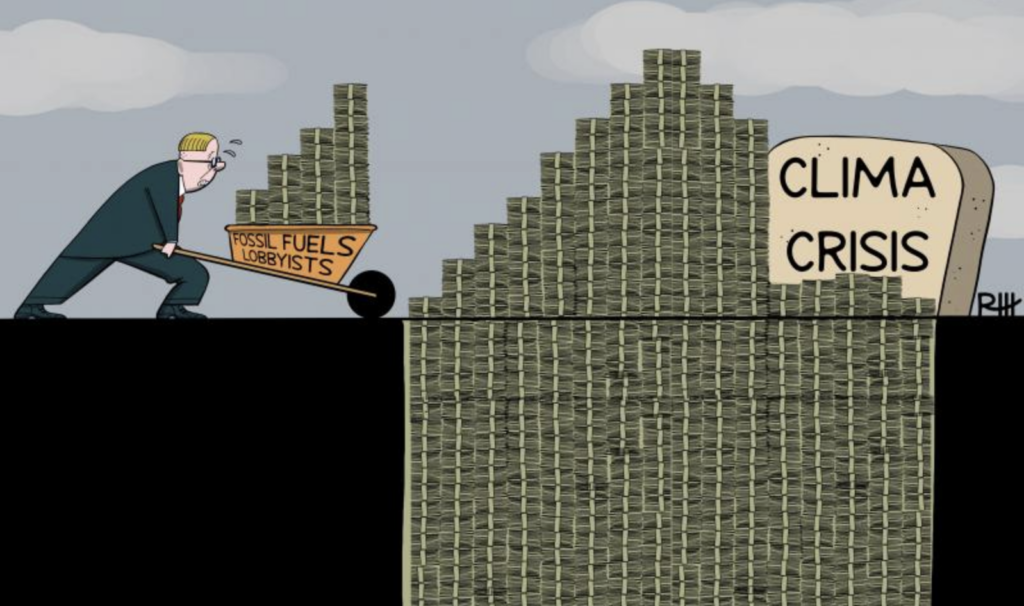This is a guest post by Nathan Empsall of Care2
When Congress debates whether to pour money into new tar sands and oil pipelines, and the chairman of the Environment and Public Works Committee uses snowballs to “prove” that climate change is a “hoax,” it can sometimes feel like we’re losing the war to keep our planet healthy and habitable.
But if you look outside the public sector, there’s reason for hope. Green technology actually pays. Here are five growing tech markets that should give anyone hope for the future:
1. Large-Scale Lithium Batteries
There’s enough wind energy in the United States to provide 10 times the power we use today. The problem? As with many renewable technologies, the wind isn’t blowing all the time, which means we need a way to store the energy for later use in a long-term, portable way.
While the development of computer processing capacity has expanded rapidly, battery technology hasn’t kept up. That’s why the current iPhones can store 32 times the amount of data as the original model, but their batteries only support four times the talk time.
The same can be said for the renewables industry. Renewables are competitive with traditional fossil fuels, except that storage remains a problem.
Tesla has been leading the way to fix that, while the Swedish company, Alevo, is challenging Elon Musk’s dominance with a new battery system that’s strong and durable. The company is opening a new facility in North Carolina that can produce several gigawatts of storage every year. By comparison, the largest solar power plant in the United States has a peak capacity of 550 megawatts. Alevo is so confident in its product that it’s managing the facility itself, taking on both the product and production risk, a bold move that could pay off for all of us.
2. Smart Homes
Just ask Google, which dropped $3.2 billion last year to acquire the smart utility start-up Nest, about the potential of the smart home. Most of us have power company-installed energy meters on our houses. Smart meters take off from this premise and actually share that information in real time with consumers, so that people can adjust their habits—turning the air conditioning down a notch, unplugging appliances not in use—to save energy and money.
3. Home Solar (Plus Storage)
Distributed solar energy is the growing success story of the last decade. As the price of photovoltaics has plummeted, companies have sprung up to help eco-conscious—and money-conscious—homeowners take advantage of the technology with long-term financing.
The company Solar City has gone a step further, partnering with Tesla to integrate the electric car company’s home batteries into their systems. Most home solar systems are connected to the main power grid, meaning that during part of the day (like at night), even homes with solar panels use some dirty energy. The Tesla battery has the potential to change that, allowing a home to go completely off the grid and operate 100% with on-site generated renewable energy. Solar City quickly filled its pilot program and is promising to add more customers in summer 2015.
4. Electric Trucks
While hybrids still only comprised 2.75% of the auto market in 2014, that’s 45 times higher than the year the Prius debuted. The difference today is that choosing a hybrid doesn’t mean you can’t drive an SUV.
Via Motors is now doing the same thing for electric trucks. Similar to the Chevy Volt, a plug-in VIA truck drives its first 40 miles on electricity before switching over to gas for a full range of up to 350 miles.
By normalizing the energy-efficient and green choice, companies can reach customers who may never consider themselves environmentalists. What makes a real difference is reaching the masses. Sometimes, that means meeting them halfway with products you may not fully support, but are a heck of a lot better than the traditional large vehicles on the market.
5. Microgrids
Microgrids create local power networks that are easier to manage and often more affordable than large-scale electricity transmission networks, especially in far-flung rural communities. This has worked well on remote islands in South Korea that were difficult and expensive to connect to the main grid and in rural parts of India where the alternative was old kerosene technology.
Companies in the United States are taking notice of the energy, cost and emissions savings from these projects. Both Samsung and Solar City/Tesla are betting that microgrids can work in the United States and investing in battery technology and networked renewables systems.
Technology alone cannot save the world, but these and other exciting products of the growing green tech sector show that being environmentally friendly and making a profit can go hand in hand.
Nathan Empsall is a Senior Grassroots Strategist for Care2. He works with citizen authors on The Petition Site to create successful petitions. Prior to joining Care2, Nathan worked for Barack Obama’s email team, and the Sierra Club’s digital team. In addition, he is a founding member of SierraRise, was the national online organizer for the Beyond Oil Campaign, and has helped promote green transportation solutions like electric vehicles. Nathan currently resides in Washington, DC.
Subscribe to our newsletter
Stay up to date with DeSmog news and alerts









